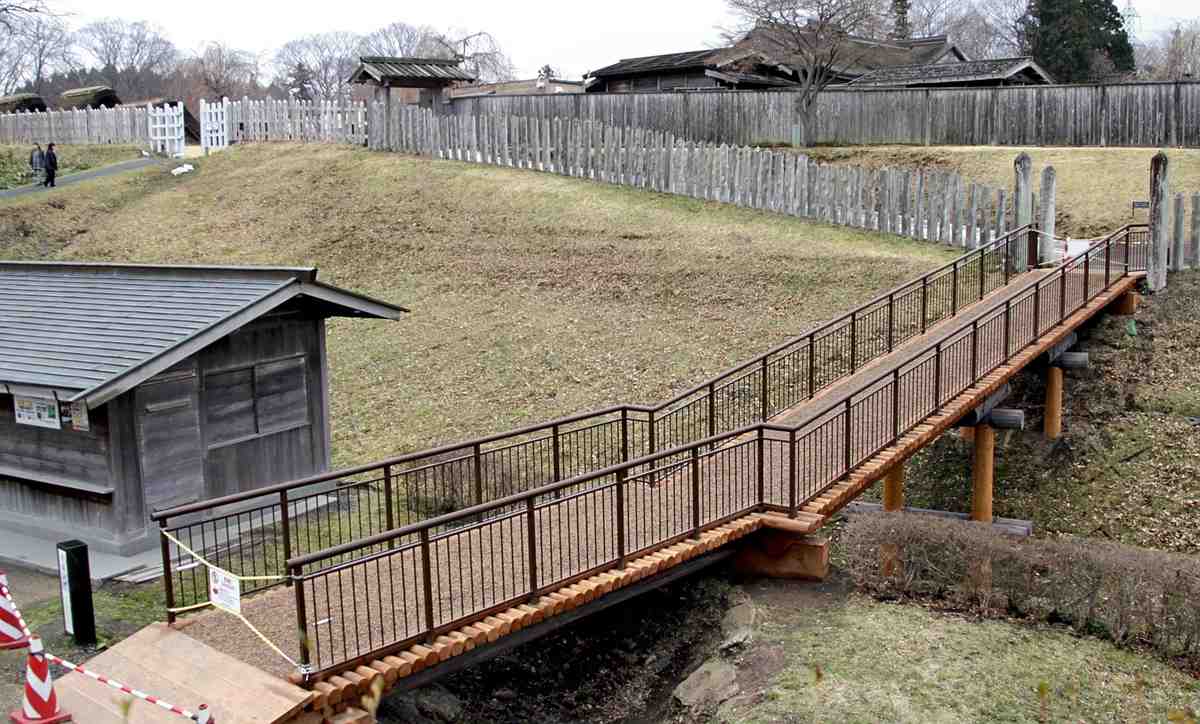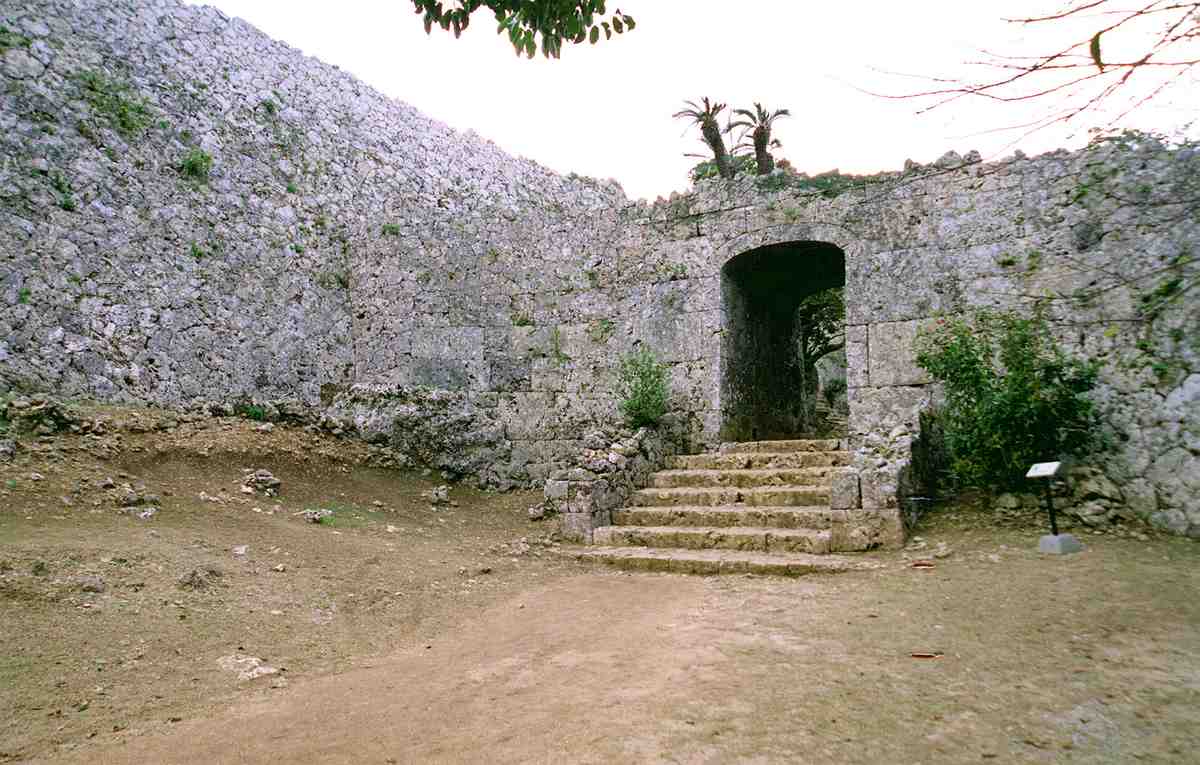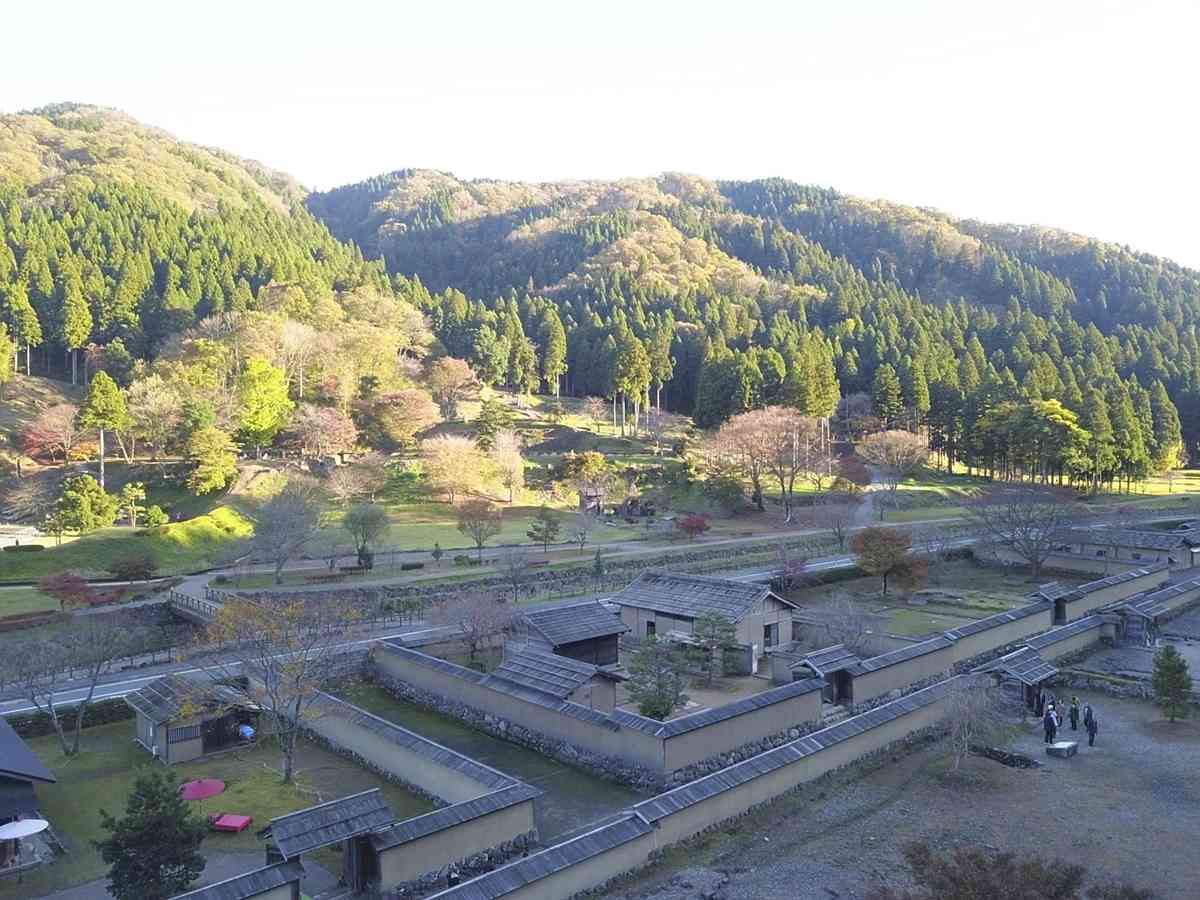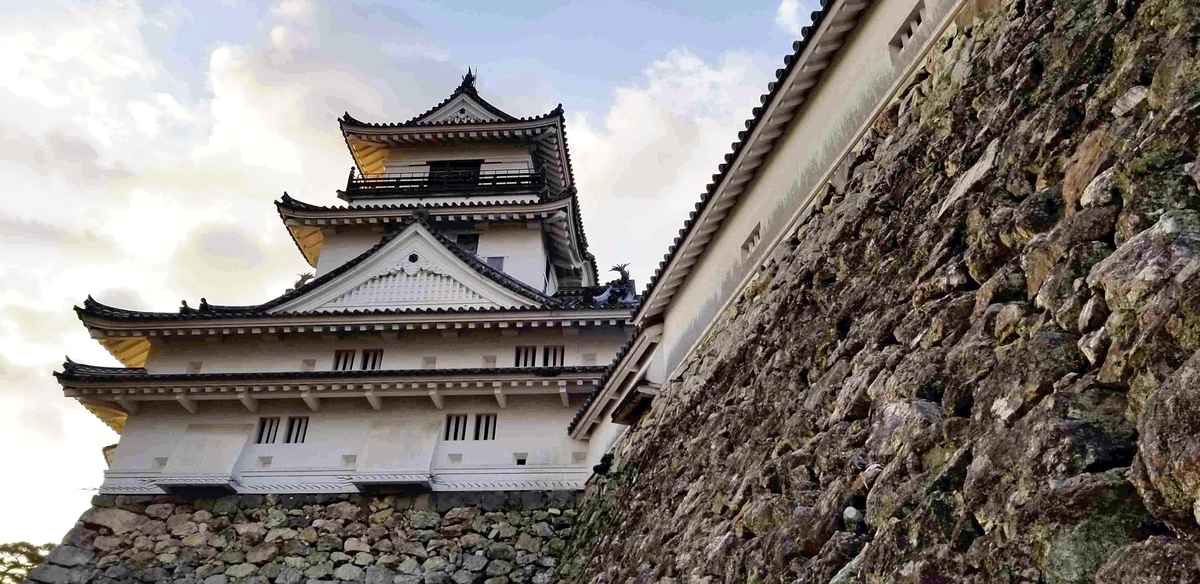Shunputei Shota points to the Tatsumi-yagura Tower of the Imperial Palace in Chiyoda Ward, Tokyo. “There is a hole in the protruding part in the center, from which stones have fallen for defense,” Shota explained.
7:00 JST, November 11, 2024
There is an unprecedented boom in the popularity of Japanese castles. According to the Japan Castle Foundation, which published a list of Japan’s 100 best castles in 2006, more than 6,000 people have certified through the foundation that they visited all the castles on the list this year.
I decided to interview Shunputei Shota, a rakugo comics storyteller known as an avid castle lover, to ask him about the appeal of Japanese castles.
Born in a former castle town
The Yomiuri Shimbun: I hear you became obsessed with castles when you were in high school.
Shunputei Shota: I was born in Ninomaru-cho [meaning the second bailey of a castle] in Shimizu city [now part of Shizuoka]where there used to be a castle called Ejiri Castle. It’s long gone now, but I found it interesting that the place I was playing was a castle, and I started researching different things. It’s not that I was particularly attracted to castle towers or stone walls.
The Yomiuri Shimbun: That’s a pretty specific way to get interested in castles.
Shota: It was the mid-16th century or later that the main castle keeps began to take shape, meaning they only occupy the last few pages in the history of castles. What initially attracted me were castles from earlier times, when the local lords fought for power. It is believed that there were 30,000, even 40,000 castles, like a swarm throughout Japan. There were a lot of them, like convenience stores today. Therefore, you can enjoy castle exploration anywhere in Japan.
In particular, many mountain castles were built around that time, so when I look at a map and guess that there must be a castle on such and such a mountain, I’m usually right. Even when I travel around the country to perform in rakugo shows, I often get to the destinations a little earlier than planned and check out local castles before going to work. (Laughs)
The Yomiuri Shimbun: What do you do to enjoy visiting the castle?
Shota: Castles are defensive facilities, so my style is to enjoy traps and other such aspects. This now stands on the grounds of the Nippon Budokan Hall [the former] Edo Castle beyond Tayasu-mon Gate. After a concert or other event there, the crowds coming out slow down and huddle around the small Masugata-koguchi-structured exit from the gate. They can’t get out easily, which means people today also get trapped by the castle. (Laughs)
But it’s not just about Edo Castle. Bridges over the canals [around Japanese castles] are also traps. They are narrow and only allow a small number of people at a time, making them easy to attack. Himeji Castle is deliberately designed not to let anyone in without taking a long detour. I hope people will enjoy such traps in castles. It would be such a shame if people ended their castle visit with just looking at the main castle, because then they would miss out on so much.
The Yomiuri Shimbun: You really enjoy the original intention behind the castle construction.
Shota: Yes. Nowadays, more and more people enjoy visiting castles, which advances the maintenance of castles. But they were military facilities that would get into trouble if anyone got in, so they were designed to be uncomfortable. Still, I like to put time and mental energy into enjoying the design.
The Yomiuri Shimbun: Each castle has its own charms, from large castles from the early modern period to mountain castles.
Shota: All castles are interesting, and when I think about the who, when and why of their construction, it becomes impossible to decide which is the best. There are endless castles to visit, so I guess I should live a long life. (Laughs)
***
Shota’s choices
Nejo Castle (Hachinohe, Aomori Prefecture)

Reconstructed main building, definitely worth a look
Built in the 14th century, this castle belonged to the Nanbu clan, who settled in this area. The castle is very well maintained and the main building has recently been reconstructed, making the location well worth a visit. There’s no stopping it, you say? Yes, that’s what castles were like back then. I hope you visit this castle and challenge your preconceptions about it.
Odawara Castle (Odawara, Kanagawa Prefecture)

Fort to protect the entire city
What probably comes to mind when you think of this castle is the reconstructed keep from the Showa era (1926-89). But also pay attention to the environment. There are wide moats and earthen walls built by the powerful Hojo clan that extend around the city as if to protect the entire place. They are just overwhelming. I hope that during your visit you will feel the grandeur of its size.
Castles of Okinawa

Ruins with elegant stone walls
How about visiting castle ruins in Okinawa Prefecture? The characteristic castles there are called ‘gusuku’ and have stone walls with a special architectural style. They are often elegantly curved. If I had to name a favorite among them, it might be Nakagusuku Castle (in Nakagusuku village). The arched gate and stone walls are very well preserved.
Ichijodani Castle (Fukui Prefecture)

Wondrous ruins are still being explored
Ichijodani is the name of the place that used to belong to the Asakura clan, where the ruins of both the castle town and the lord’s residence are still miraculously preserved. Excavations and investigations of the site are ongoing, so there are always new discoveries when you visit. It carries the influence of Kyoto’s culture. Now that the Shinkansen bullet train service has expanded to Fukui, you can visit the ruins.
Kochi Castle (Kochi Prefecture)

Donjon, the main palace, remains
This castle was built by Yamauchi Kazutoyo, a feudal lord who was assigned to Tosa (the old name for Kochi) after the Battle of Sekigahara in 1600. In Japan there are 12 castles with keeps left from the Edo period or earlier. Kochi Castle is the only castle where both the keep and the main palace are intact. Furthermore, the keep and the main palace are connected, which is a rather unusual structure.



